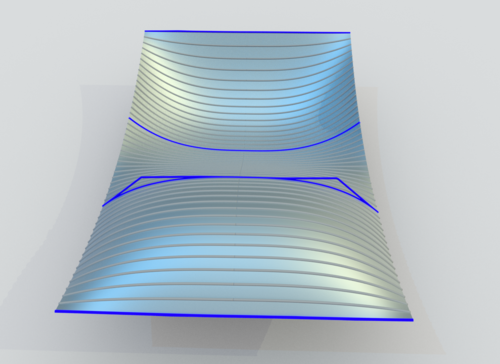Abstract
With robotic hot-blade cutting one can obtain inexpensive and interesting architectural formwork for concrete casting. To fully utilize this technology I will in this talk present two methods for designing interactively with elastic splines. To present these methods I will first introduce Euler’s Elastica: a minimizer to the bending energy and the related work on approximating curves with elastic splines. Build on this work I present our experimental study that forms the basis for the first design tool: a tool that projects a cubic B´ezier curve to an elastic curve. The experimental study consists of a large sample of cubic B´ezier curves that we have approximated with elastic curves. Using this sample we have been able to identify simple and easy implementable criteria for turning a cubic B´ezier curve into an elastic curve. This method generalizes to a projection tool for projecting cubic splines to elastic C1 splines.
As an alternative to projecting a cubic spline to an elastic spline I will in this talk also consider the approach of modelling an elastic spline using a proxy that can be interactively modified. In our second design tool we use a cubic spline visually close to an elastic spline as a proxy. We use the λ-residual to guarantee closeness. The λ-residual is a quantity studied in our experimental work that determines the closeness of a cubic B´ezier curve to an estimated elastic curve. The cubic spline proxy can be interactively modified by dragging the control points to good regions obtained by using a database of cubic B´ezier curves and their λ-residuals.
Time & Location
Dec 14, 2017 | 03:00 PM
FU Berlin | Arnimallee 6 | Raum 108/109

